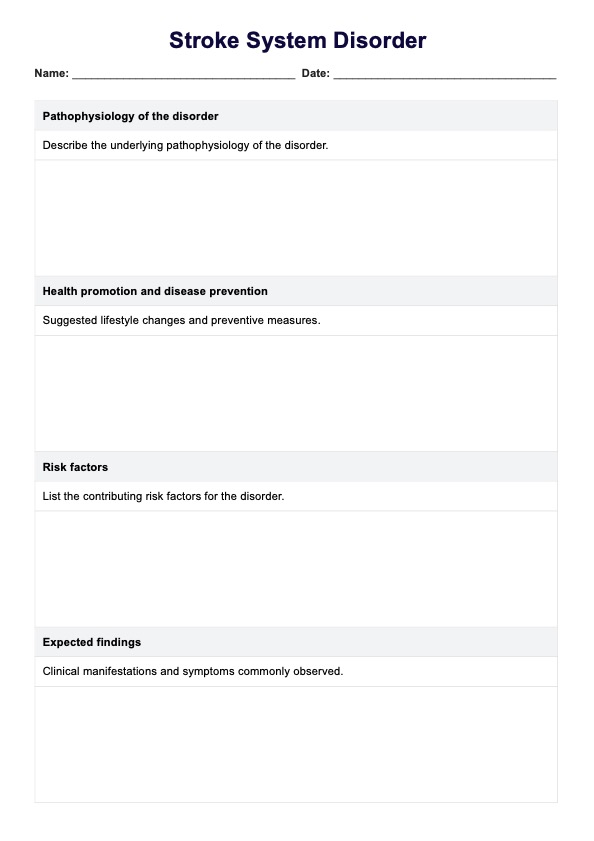Yes, occupational and physical therapy can significantly aid stroke patients in their recovery. These therapies help individuals regain strength, mobility, and independence, facilitating their return to daily activities.

Stroke System Disorder Template
Enhance learning with our Stroke System Disorder Template. Use this essential educational tool to improve patient care.
Stroke System Disorder Template Template
Commonly asked questions
The Stroke System Disorder Template is a structured framework used by healthcare professionals to assess, diagnose, and manage stroke cases. It helps document important aspects such as pathophysiology, risk factors, diagnostic tests, therapeutic procedures, and patient education, ensuring comprehensive care for stroke patients.
The template serves as a reference for healthcare professionals to document key clinical findings, including the type of stroke (e.g., ischemic stroke, hemorrhagic), monitoring blood vessels for blockages, and tracking interventions such as controlling blood pressure and preventing blood clots. It ensures that all essential care steps are taken to prevent complications and improve stroke patient outcomes.
EHR and practice management software
Get started for free
*No credit card required
Free
$0/usd
Unlimited clients
Telehealth
1GB of storage
Client portal text
Automated billing and online payments











